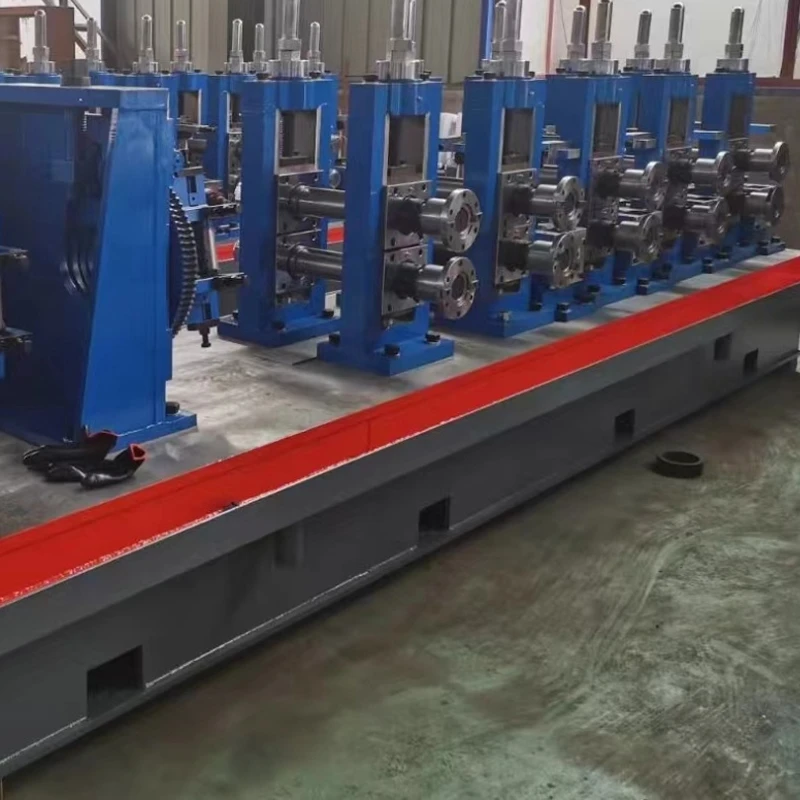cold roll forming
Understanding Cold Roll Forming A Comprehensive Overview
Cold roll forming is an efficient and versatile manufacturing process that has become increasingly popular in various industries for producing a wide array of metal products with precise specifications. This method stands apart from traditional metal shaping techniques, offering significant benefits in terms of strength, dimensional accuracy, and material efficiency.
What is Cold Roll Forming?
Cold roll forming is a continuous process that involves rolling metal sheets or strips through a series of shaped rollers to produce elongated sections with consistent cross-sectional profiles. Unlike hot rolling, which takes place at elevated temperatures, cold roll forming occurs at or near room temperature. This approach allows for better control over the material properties and minimizes issues such as oxidation or undesired scaling that can occur with high-heat processes.
The process begins with the careful selection of raw materials, usually thin steel sheets or strips. These materials are then passed through a series of paired rollers that gradually shape the metal into the desired profile. The intricacies of the rollers can be finely tuned to create a variety of shapes, including C-sections, Z-sections, and various custom profiles tailored to specific applications.
Advantages of Cold Roll Forming
1. High Precision Cold roll forming provides exceptional dimensional accuracy. The automated nature of the process minimizes the variance often associated with other manufacturing techniques. This precision is crucial for applications requiring tight tolerances and exact specifications.
2. Increased Strength One of the significant benefits of cold work processes, including roll forming, is strain hardening. When the metal is shaped at room temperature, its crystal structure becomes more tightly packed, leading to improved mechanical properties, including higher yield strength.
3. Material Efficiency The cold roll forming process is inherently material-efficient. It generates minimal waste during production, and the continuous nature of the process means that manufacturers can produce long lengths of material with minimal interruptions.
cold roll forming

4. Cost-Effectiveness The combination of reduced waste, high-speed production capabilities, and lower energy costs makes cold roll forming a cost-effective solution for mass production. This is particularly beneficial for companies looking to scale their operations without sacrificing quality.
5. Versatility A wide range of materials, including different grades of steel, aluminum, and even certain plastics, can be processed using cold roll forming. This versatility allows manufacturers to cater to diverse market needs, from automotive components to building structures and beyond.
Applications of Cold Roll Forming
The applications of cold roll forming are vast and varied. Industries such as construction, automotive, and appliance manufacturing heavily rely on this process. For instance, in the construction sector, cold-formed steel sections are prevalent in structural frameworks, providing both strength and lightness.
In the automotive industry, components like brackets, beams, and chassis parts are often produced through cold roll forming for their enhanced strength-to-weight ratio. Additionally, manufacturers of appliances utilize this process to create durable metal frames for household devices, ensuring longevity and reliability.
Conclusion
Cold roll forming is a manufacturing marvel that exemplifies the advancements in modern engineering. Its ability to produce high-quality, precise metal products while minimizing waste and reducing costs makes it an attractive choice for industries worldwide. As technology continues to evolve, the potential for cold roll forming applications will only expand, solidifying its role as a crucial component of contemporary manufacturing processes.
Whether you’re involved in construction, automotive production, or any other industry requiring robust metal components, understanding the benefits and capabilities of cold roll forming can help you make informed decisions about your manufacturing processes and material usage.
-
High Frequency Straight Seam Welded Pipe Production Line|BzZhou Xinghua|Precision Welding&EfficiencyNewsJul.30,2025
-
High Frequency Straight Seam Welded Pipe Production Line - BzZhou Xinghua|Precision Engineering&EfficiencyNewsJul.30,2025
-
High-Frequency Straight Seam Welded Pipe Production Line-BzZhou Xinghua Machinery Equipment Manufacturing Co., LTD.NewsJul.30,2025
-
High-Frequency Straight Seam Welded Pipe Production Line-BzZhou Xinghua Machinery Equipment Manufacturing Co., LTD.|Precision Manufacturing, High EfficiencyNewsJul.30,2025
-
High Frequency Straight Seam Welded Pipe Production Line-BzZhou Xinghua Machinery Equipment Manufacturing Co., LTD.|Precision Steel Pipe Manufacturing&Industrial EfficiencyNewsJul.29,2025
-
High-Frequency Straight Seam Welded Pipe Production Line-BzZhou Xinghua Machinery Equipment Manufacturing Co., LTD.|Precision Steel Pipe Manufacturing&Industrial EfficiencyNewsJul.29,2025


